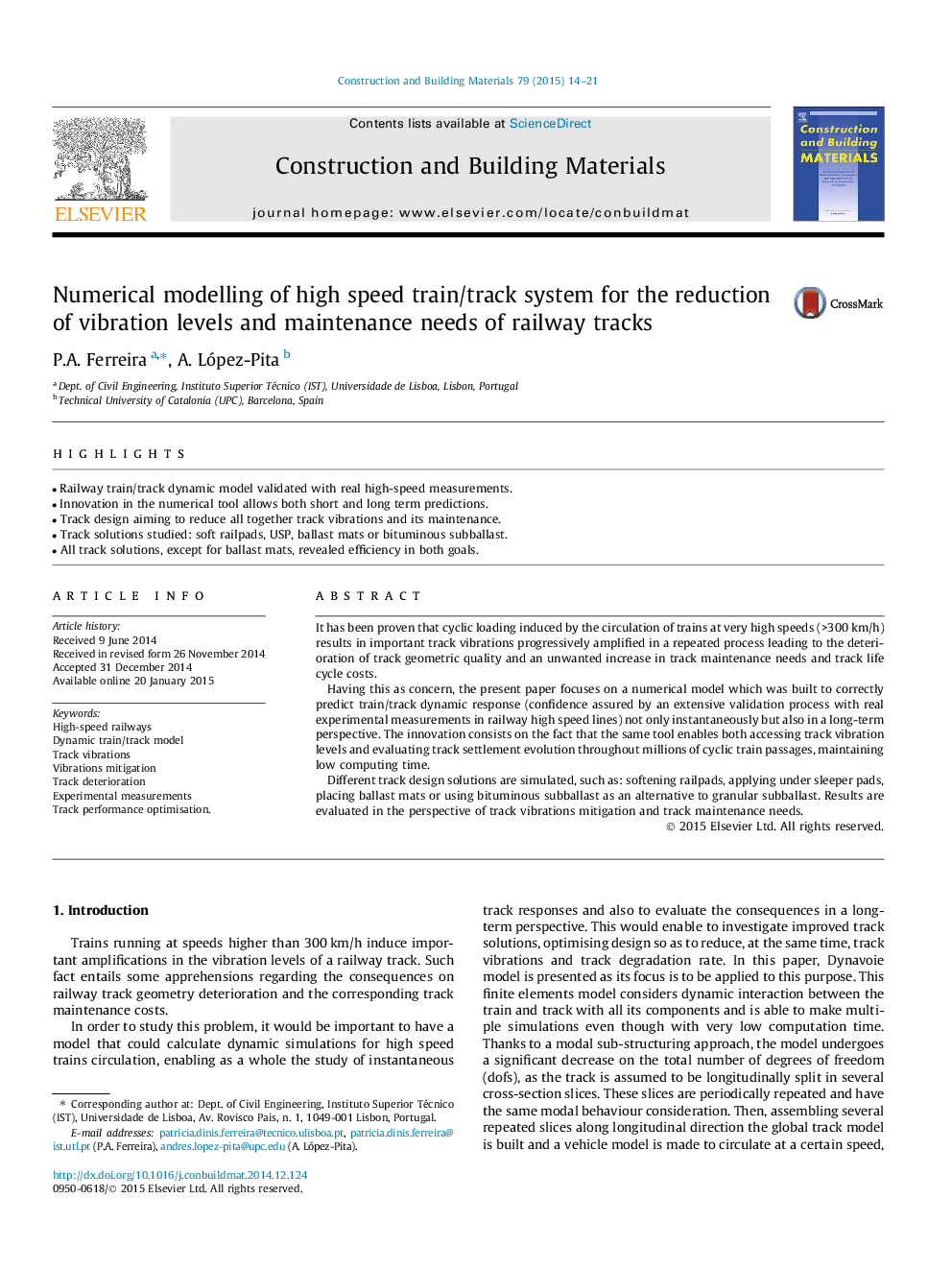| Article ID | Journal | Published Year | Pages | File Type |
|---|---|---|---|---|
| 257171 | Construction and Building Materials | 2015 | 8 Pages |
•Railway train/track dynamic model validated with real high-speed measurements.•Innovation in the numerical tool allows both short and long term predictions.•Track design aiming to reduce all together track vibrations and its maintenance.•Track solutions studied: soft railpads, USP, ballast mats or bituminous subballast.•All track solutions, except for ballast mats, revealed efficiency in both goals.
It has been proven that cyclic loading induced by the circulation of trains at very high speeds (>300 km/h) results in important track vibrations progressively amplified in a repeated process leading to the deterioration of track geometric quality and an unwanted increase in track maintenance needs and track life cycle costs.Having this as concern, the present paper focuses on a numerical model which was built to correctly predict train/track dynamic response (confidence assured by an extensive validation process with real experimental measurements in railway high speed lines) not only instantaneously but also in a long-term perspective. The innovation consists on the fact that the same tool enables both accessing track vibration levels and evaluating track settlement evolution throughout millions of cyclic train passages, maintaining low computing time.Different track design solutions are simulated, such as: softening railpads, applying under sleeper pads, placing ballast mats or using bituminous subballast as an alternative to granular subballast. Results are evaluated in the perspective of track vibrations mitigation and track maintenance needs.
